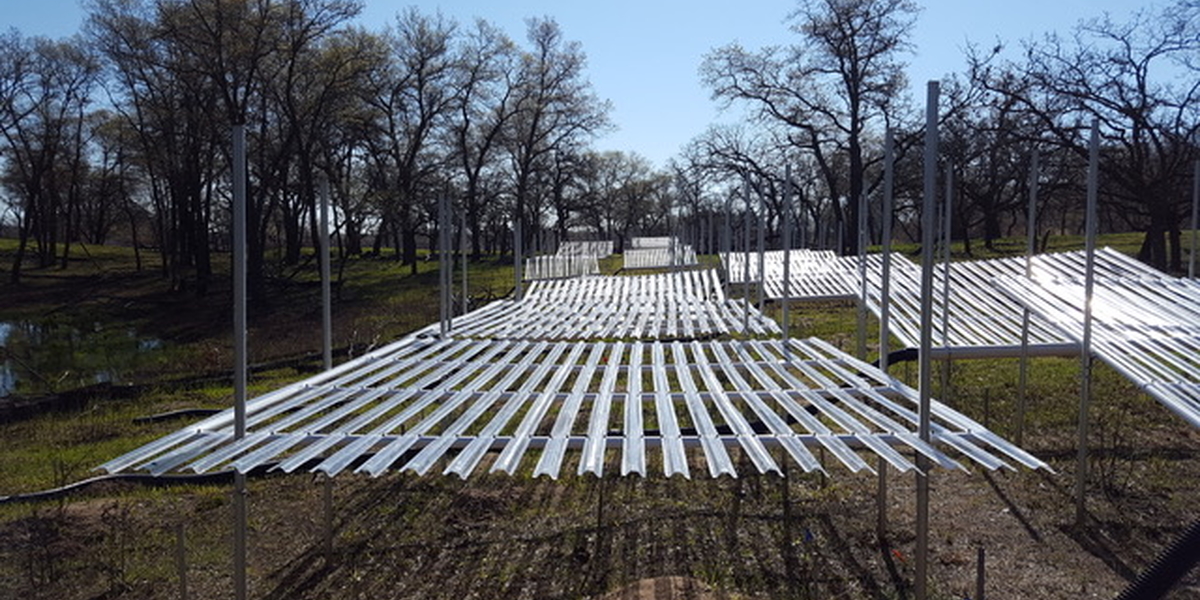
Visit Minnesota in the summer and you're likely to be struck by the intense greenness of it all. Not so in 2021 when the state suffered a severe drought that robbed the landscape of its characteristic color in favor of variations on brown with a side of crispy for good measure.
An increase in the frequency of extreme drought events like that of 2021 has already taken a toll on ecosystems worldwide. However, new research led by Colorado State University scientists and co-authored by several University of Minnesota researchers shows that the projected effects of drought on shrublands and grasslands across the globe have been grossly underestimated. The paper, published in Proceedings of the National Academy of Sciences, demonstrates that short periods of extreme drought can result in a 60% decrease of above-ground plant growth in grasslands and shrublands compared to growth in less severe drought conditions.
While the results are grim, the good news is that this study represents one of the many ways scientists are using creativity and grassroots scientific networks to address the most important environmental questions facing us today. The publication is based on data collected at 100 sites worldwide over four years and includes more than 170 authors. The use of these globally distributed experiments was piloted by two UMN researchers who currently work at Cedar Creek Ecosystem Science Reserve, one of the most important ecological research sites in the world.
Local to global
This research started when a group of early-career scientists saw a need to think globally. “The lead author on this paper, Melinda Smith, and I were postdocs together at University of California-Santa Barbara, along with Elizabeth Borer and others,” says Eric Seabloom, a professor in the College of Biological Sciences (CBS) and interim director at Cedar Creek. Like Borer, also a faculty member in the CBS Department of Ecology, Evolution and Behavior, Seabloom has been on the front lines of ecological research for decades, with 13 of those years spent at the University of Minnesota.
While post-docs at UC-Santa Barbara, Smith, Borer and Seabloom grew frustrated by the limitations of geographically-constrained ecological experiments and began discussing solutions. With a few others, they conceived the Nutrient Network (or NutNet) in 2007 as a way for scientists to assess human impacts on ecosystem nutrient cycling on a global scale. Borer and Seabloom have led NutNet since that time.
By setting strict (but simple and cheap) experimental protocols, the NutNet crew built a resilient and robust community of collaborative international scientists whose findings continue to challenge ecological ideas. Now, NutNet researchers study over 150 grassland sites worldwide. So where does drought come in?
This new paper on droughts also used the grassroots science model developed for NutNet. “A drought treatment just got too complicated for NutNet,” says Seabloom, explaining why the two remain separate. “Smith built off of the NutNet framework to start DroughtNet. It’s a huge international project – this is just its first big paper.” DroughtNet follows a similar model as NutNet but functions under an entirely new research committee. Like NutNet, DroughtNet serves as a way to standardize research methods and connect with global researchers to work toward a common goal: understand the implications of drought across environmental gradients.
Bringing it back home
The new publication also acknowledges that each participating site is affected by drought in varying degrees. Cedar Creek is no exception.
“In this study if you look at Cedar Creek’s data, you’ll see it’s right about in the middle,” says Seabloom. “Drought didn’t have a huge impact. But if you look at studies at Cedar Creek, where we’ve combined the drought treatment with other factors like warming, CO2 and nutrient enrichment, then you see really strong impacts.” In other words, many changes occurring at the same time can magnify the negative consequences of global change.
But one of the biggest advantages of zooming in to one particular site, like the drought experiment set up at Cedar Creek, is to see the local impact the research has on surrounding communities. When a visiting group of K-12 students came to learn about the NutNet and DroughtNet sites, they were astounded to learn that similar experiments were being conducted by scientists all around the world.
Scientists in India, Australia, the Himalayas, Canada and Argentina, among many others, are all working together to conduct the identical experiment. These global experiments have also helped build a more inclusive research community. Some of this diversity can be seen in the lead authors on NutNet papers. For example, publications from this work have included scientists who speak nine different first languages.
“It really creates a sense of being part of a more global scientific effort,” says Seabloom. “I think that's been really cool.” –Adara Taylor